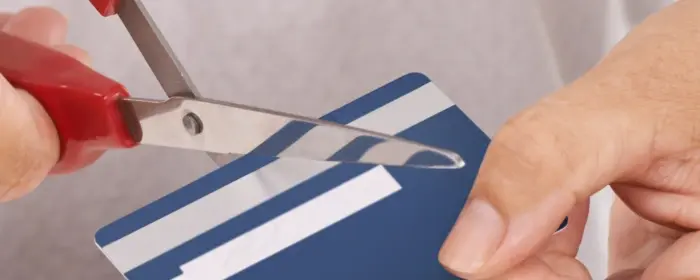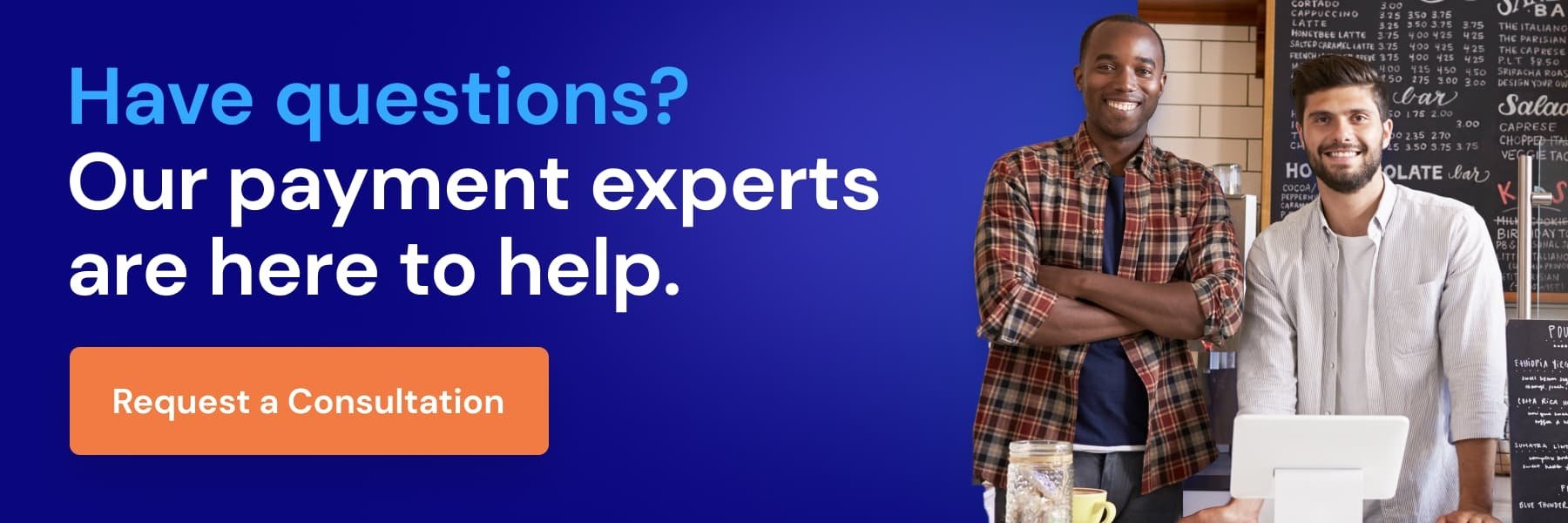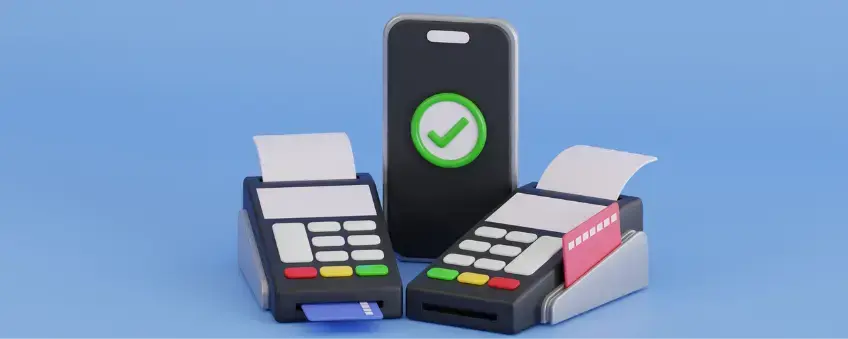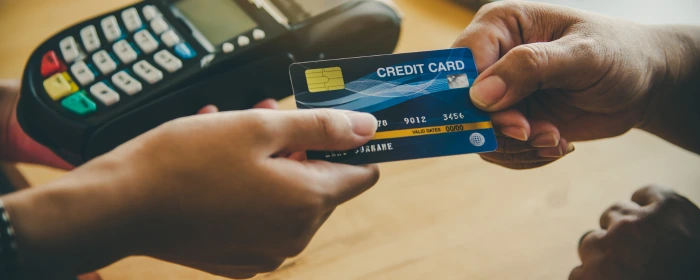While modern credit card payments facilitate instant transactions between merchants and consumers, they're not without their challenges. If there's an issue with a payment, the transaction will decline, and a credit card decline code will be displayed, forcing the merchant to try and resolve the issue and re-attempt the payment.
Credit card decline codes are a tool designed to help merchants understand the reason for a payment failure. When a merchant attempts a payment, and it fails, they receive an alphanumeric code indicating the reason for the transaction rejection. Failed payments occur for various reasons, from incorrect card numbers to fraud. With the United States being the most fraud-prone country in the world, it's essential for merchants to understand error codes, their relation to fraud, and how they may impact their businesses.
This guide explores decline codes, SEC violations, how hard declines differ from soft declines, and various related topics. Read ahead to learn everything you need to know about credit card decline codes and how they impact your business!
What Does SEC Violation Mean?
An SEC violation refers to error Code 63 — one of the most common decline codes received during credit card transactions. Error Code 63 implies a security violation. If a merchant receives this error code, it indicates a card issuer rejection, meaning the issuer is unwilling to approve the transaction due to potential fraud. It can be triggered for various reasons, including when someone inputs an incorrect CVV code.
If a merchant receives this error code, they can re-attempt the transaction. It's critical to double-check the payment details, such as the CVV number, before attempting the transaction a second time. If the issue persists, notify the cardholder they must contact their issuing bank to resolve the problem.
What is a Decline Code on a Credit Card?
A decline code on a credit card is an alphanumeric code merchants receive when a credit card transaction fails. The code communicates why the credit card payment was declined, allowing merchants to resolve the issue and re-attempt payment. Most decline codes are standardized, regardless of the payment provider or the card issuer, ensuring clarity for merchants trying to resolve payment issues. However, there are some decline codes specific to certain card networks (i.e., American Express, Visa, and Mastercard).
Remember that decline codes do not include specific information about the transaction; they just indicate a general reason the payment failed. For example, with Code 12 (invalid transaction), there could be various reasons the transaction is invalid, ranging from suspicious payment activity to an incorrect card number. You'll need to investigate further to determine why the payment failed. This may involve speaking with the cardholder during the transaction or contacting the card issuer for further clarification. In some cases, decline codes indicate fraud, making it essential for the merchant to avoid re-attempting payments.
What Causes a Credit Card Decline, and How Should You Respond?
Credit card decline codes occur for various reasons. Common issues include incorrect CVV numbers, stolen credit card details, and invalid credit card numbers. While some decline codes indicate potential fraud, others communicate standard payment issues, such as insufficient funds. How a business should respond varies depending on the code. Let's explore a step-by-step guide for responding to decline codes:
Step 1: Determine the Reason for the Decline
First, identify the decline code when a customer's credit or debit card transaction declines. Once you have the decline code, you can determine the general reason for the failed payment. Reference the list of decline codes in this guide to learn the payment issues corresponding to the most popular ones.
Step 2: Inform the Customer
Next, it's time to inform the customer that their payment has been declined. For example, if you receive Code 51 (Insufficient Funds), tell the customer their card does not have enough credit to finalize the transaction. In the case of suspected fraud, you must be careful about informing the customer, as they may be a scammer.
Step 3: Determine the Best Solution Before Re-Attempting Payment
Once you inform the customer of the problem, it's time to determine the best solution. For example, if the error code is due to an incorrect card number, re-attempting the payment with the correct card number is a suitable solution. However, if the error code is due to the card being expired, the correct solution is to use an alternative payment method to complete the transaction.
It's critical to avoid re-attempting a payment before resolving the issue. Re-attempting a payment too many times may result in the payment processor suspecting fraud.
Reduce Exposure to Chargebacks
While dealing with the immediate response to decline codes is essential, a merchant must also have a broader approach to reducing exposure to payment issues. One of the most critical factors to consider is chargeback prevention. With global chargeback volume expected to reach $165 billion in 2024, it's never been more essential to mitigate payment dispute risk. Let's explore some quick tips your business can use to reduce exposure to chargebacks:
- Use Anti-Fraud Technology: First, make sure your business has anti-fraud technology to prevent scammers from using stolen credit card details to make purchases. Modern anti-fraud tools include CVV verification, address verification, machine learning, IP address verification, and various other fraud detection systems.
- Track Customer Details: Next, it's time to track all customer details and interactions. If a customer files a chargeback against your business, but you suspect the cardholder authorized the payment, your business can dispute the chargeback. However, you must prove to the card network that the cardholder processed the transaction, so storing all information from your interaction with the customer is essential. Details such as IP address, shipping confirmation, payment information, and other details can be good evidence when disputing a chargeback.
- Avoid Suspicious Charges: If your business identifies suspicious charges, it's better to be safe and reject or pause the transaction. For example, if a customer suddenly attempts a large number of payments in a small time window, this may indicate fraud. Likewise, if you receive payments from countries or regions where you have no customers, it may be a scammer using stolen credit card details.
- Develop a Chargeback Prevention Process: Lastly, it's critical to have an internal chargeback prevention process that all your staff members understand. For example, if you receive a payment from an overseas jurisdiction, your chargeback prevention process may instruct staff to call the customer for confirmation before approving the payment. Implementing a few internal controls can go a long way in reducing exposure to fraud.
So, how does this relate to decline codes? A decline code is one of the first lines of defense against chargebacks. It provides merchants with reasons for declining a payment, which sometimes includes fraud and other issues that may result in a payment dispute. Understanding decline codes is essential for businesses seeking to avoid chargebacks.
How Do Hard Declines Differ from Soft Declines?
If a merchant receives a decline code, it's critical to determine whether it's a "soft decline" or a "hard decline." A soft decline indicates the merchant can re-attempt payment. On the other hand, a hard decline dictates the credit card should not be used to re-attempt a payment. While credit card declines are frustrating for merchants, they offer protection. By preventing a transaction from occurring, credit card decline codes help reduce exposure to fraudulent transactions and other payment issues. Let's take a deeper look at soft declines, hard declines and how they impact merchants:
What Constitutes a Soft Decline?
A soft decline indicates the merchant can re-attempt a transaction after identifying the reason for the payment failure. With soft declines, the error code does not indicate a likelihood of fraud. For example, if a merchant attempts a payment and receives Decline Code 51, it indicates the cardholder has insufficient funds in their account. The merchant can re-attempt the payment if the cardholder can move money into their account to ensure sufficient funds.
However, with a soft decline, the merchant isn't obligated to re-attempt payment. The merchant may decide the payment is too risky or ask the customer to use an alternative payment method to avoid an additional declined transaction.
What Defines a Hard Decline?
A hard decline is more serious. It indicates the payment should not be re-attempted. For example, if a merchant receives Code 43 (Stolen card, pick up), it should not re-attempt payment with the credit card, as there's a high likelihood it's a fraudulent payment. Hard declines are frustrating because they make it challenging to complete a transaction. However, merchants should not attempt to push through a payment that results in a hard decline.
List of Debit Card Decline Codes
If you're searching for a list of debit card decline codes, check out the most popular ones below:
Code 01 | Refer to issuer
Code 01 indicates the cardholder's issuing bank declined the credit card transaction. Unfortunately, this code doesn't help the merchant or the cardholder discern the specific reason for the decline. If you receive Code 01, ask the cardholder to contact their bank to resolve the issue. If this isn't an option, ask the customer to use an alternative payment method, such as another credit card.
Code 02 | Refer to issuer (special)
Code 02 indicates a similar issue to Code 01 — it results from a card issuer rejection. Unfortunately, this is another code that doesn't include specific information about the reason the issuer declined to settle the transaction. However, Code 02 indicates there may be a more serious issue at play, such as a blocked account or fraud. If your business receives this code, tell the cardholder to speak with their card issuer immediately.
Code 04 | Pick up card
Code 04 indicates the credit card used for the transaction is no longer valid. This may be due to expiration, canceled accounts, or various other reasons, but it does not indicate fraud. If possible, you should retain the card and inform the cardholder their issuing bank says the card is no longer valid. Request an alternative payment method to complete the transaction.
Code 05 | Do not honor
Code 05 indicates the bank suspects the transaction is fraudulent. Call the issuing bank and ask for further clarification before proceeding with the transaction. While you may want to ask the customer to use an alternative payment method to complete the transaction, you must be careful. If the customer is a scammer, they may attempt to use another fraudulent payment method or file a chargeback after the transaction settles.
Code 07 | pick up card, special condition (fraud account)
Code 07 indicates the customer is using a fraudulent account. In this case, do not attempt to use the credit card for another transaction. Likewise, it's best to avoid using other payment methods from the same customer, as they may be a scammer, and the chances of a future chargeback are high. However, if you already have an established relationship with the customer (such as a recurring subscription), you may ask them to contact their issuing bank to resolve the issue before attempting another payment. If possible, you should also retain the card and return it to the issuing bank.
Code 12 | Invalid transaction
Code 12 indicates the transaction isn't valid. However, it does not provide a specific reason for the invalid transaction. This code may result from an invalid card number, CVV code, transaction format, expiration date, or other reasons. Check the transaction details carefully before re-attempting payment. If the issue persists, ask the cardholder to use an alternative payment method.
Code 13 | Invalid Amount
Code 13 indicates that the payment amount entered during the checkout process isn't valid. This usually points to a fundamental entry error, such as inputting a negative number or a symbol. Check the payment amount and re-attempt payment. If this doesn't work, contact your payment processor, as it may be a technical issue.
Code 14 | Invalid card number
Code 14 indicates the credit card number used for the transaction is not valid. In many cases, this may be due to a mistake made by a customer or staff member. Start by checking to confirm if the card number entered during the transaction matches the card number on the customer's card. If the card number is correct and the problem persists, ask the customer to use an alternative payment method to complete the transaction.
Code 15 | No such issuer
Code 15 indicates the cardholder's issuer cannot be identified. In some cases, this is because the card issuer no longer exists or the issuer is outside of the payment network used by the merchant. However, in other cases, the issue is much simpler: the cardholder is using an incorrect number, so the payment network can't identify the issuer. Check the payment details to ensure everything is correct before re-attempting payment. If the problem persists, inform the cardholder they must use an alternative payment method.
Code 19 | Re-enter
Code 19 indicates a transaction didn't process due to a temporary error. For example, if a transaction request timed out, the processor may reject the payment and send the merchant a Code 19. In most cases, this is due to a short-term technical issue, and attempting to make a payment again should not be an issue. If the problem persists, contact your payment processor, as it may be an issue with your payment technology.
Code 28 | File is temporarily unavailable
Code 28 indicates the cardholder's files at their issuing bank are inaccessible. In most cases, this is due to a technical issue at the cardholder's issuing bank, such as server downtime. Request the cardholder to contact their issuer to resolve the issue. If the files remain unavailable, request an alternative payment method from the customer.
Code 41 | Lost card, pick up
Code 41 indicates the cardholder reported the card lost. When a cardholder reports their credit card as lost, the issuing bank will flag it within their system to ensure Code 41 appears when someone attempts to use it for a payment. If possible, retain the card and return it to the issuer, as it is no longer valid. While you may want to ask the customer for an alternative payment method, it's essential to remember they may be a scammer if they're using a lost card.
Code 43 | Stolen card, pick up
Code 43 indicates that the credit card has been stolen. When a cardholder reports their credit card as stolen, the issuing bank flags the card in their system to ensure it generates a Code 43 the next time it attempts a payment. If possible, retain the card and return it to the issuer, as it is no longer valid. In the case of Code 43, it's best to avoid asking for an alternative payment method, as the customer is likely a scammer.
Code 51 | Insufficient funds
Code 51 means the cardholder does not have sufficient funds to cover the transaction. Inform the customer their card does not have enough money to cover the transaction. You can re-attempt payment if they transfer money into their account to alleviate the issue. Alternatively, ask the customer to use another payment method.
Code 54 | Expired card
Code 54 indicates the credit card's expiry date is from the past, meaning the credit card is no longer valid. If you entered the credit card details manually (for example, in a virtual terminal), make sure that you entered the date correctly. If the date is correct, inform the customer their card has expired and request an alternative payment method to complete the transaction.
Code 58 | Transaction not permitted to cardholder
Code 58 indicates that the transaction is not available to the cardholder. This may occur if a customer uses a credit card your business doesn't support (for example, you only accept Visa and Mastercard, and your customer attempts to make a payment with American Express). Likewise, it may occur due to technical issues, such as the customer using a test credit card number in a live payment gateway.
Code 61 | Exceed issuer withdrawal limit
Code 61 indicates the customer exceeded their withdrawal limit, resulting in an overdrawn account. Alternatively, it may indicate the customer exceeded a daily withdrawal limit set by the card issuer. Start by informing the customer of the problem and asking them to call their issuing bank to discuss if the limit is increasable. If that's not an option, ask the customer to use an alternative payment method to complete the transaction.
Code 63 | SEC violation credit card
Code 63 indicates a payment failed to process due to a security issue. This can result from various issues, such as a customer inputting the incorrect CVV number. Check the payment details before re-attempting payment. If the payment details are correct, the code may be occurring because the payment processor suspects the payment is fraudulent. Always be careful when requesting an alternative payment method after a Code 63, as the customer may be a scammer.
Code 65 | Activity limit exceeded or insufficient funds
Code 65 indicates a similar issue to Code 61: the cardholder is exceeding a limit set by the card issuer. In the case of Code 65, this is usually an activity limit, meaning the cardholder has exceeded the number of purchases they can make on the card within a period (such as a day or month). Start by asking the customer to contact their card issuer to see if the limit can be adjusted to complete the transaction. If this isn't possible, request an alternative payment method.
Code 97 | Invalid CVV
Code 97 indicates the CVV number for the credit card is incorrect. Before proceeding with attempting another payment, check you entered the CVV number correctly. However, be careful with this type of transaction, as an incorrect CVV number may indicate the customer is a scammer. CVV verification is one of the many tools used by payment processors to make it more challenging for scammers to use stolen credit card numbers.
Code R0/R1 | Stop Recurring Payment
Code R0/R1 indicates the customer requested to stop a recurring payment to your business. Start by canceling any future payments. Otherwise, you may face a chargeback. If the customer was not within their rights to cancel a recurring payment (i.e., they signed a long-term contract), contact them to discuss the matter.
Credit Card Decline Code Final Thoughts
Understanding credit card decline codes is essential to protecting your business from fraudulent charges, payment disputes, and other transaction issues. With 111,000 cases of credit card fraud in the second quarter of 2024 alone, it's never been more important to shield your business from scammers. While credit card decline codes are not a perfect system, as they don't provide exact reasons for card declines, they make it simpler to resolve issues by indicating a general problem to investigate. Always take care to ensure a decline code is a "soft decline" before re-attempting payment. Never re-attempt a "hard decline," such as when a customer uses a credit card flagged as stolen.
To prevent decline codes from impacting your business's bottom line, it's essential to work with a payment processor with strict security controls. Merchants with secure payment processing platforms benefit from lower exposure to fraud, which reduces the likelihood of chargebacks. Always assess a merchant service provider's anti-fraud credentials before signing a merchant agreement!
FAQ About Credit Card Decline Codes
Most credit card decline codes are universal, so you won't need to worry about codes varying when you change to a new POS or payment provider. However, while most standard decline codes are universal, some card networks have network-specific decline codes. Assess all decline codes relevant to the types of credit cards your business accepts.
A "credit card error violation of the law" refers to credit card Code 93 (Violation of the law). This error code indicates that a transaction was declined because it could potentially be a violation of the law. While the error code does not explain why the transaction may break the law, avoiding re-attempting the transaction with the same payment method is critical.
In the context of credit cards, "SEC" refers to several different terms. Firstly, SEC refers to a credit card decline Code 63 (SEC violation credit card). This decline code indicates the transaction cannot be processed because of a security violation. Secondly, SEC may refer to Standard Entry Class codes, or SEC codes, which are a classification system for United States electronic payments. SEC codes are three-letter codes designed to provide instruction for electronic funds transfers.
Start by reviewing the transaction details thoroughly. This review process must include verifying the charge, checking the customer's details, and ensuring all documentation, such as receipts and invoices, is in order. Once you have confirmed the billing error, reach out to your payment processor and initiate a dispute. Provide clear, detailed evidence supporting your case — it's the best way to resolve a billing error effectively. While the process for disputing a billing error may vary depending on the specific issue, merchants must always maintain thorough documentation to support their dispute effectively.
Yes. Filing false chargebacks or payment disputes is fraudulent. Merchants have access to various chargeback prevention tools to catch scammers attempting false payment disputes. For example, merchants may track shipping or IP addresses to verify the identity of the individual purchasing products or services. If a cardholder files a false credit card dispute, the merchant may dispute the chargeback and provide evidence against the cardholder. In some cases, this may result in the merchant pursuing criminal or civil charges against a scammer.






